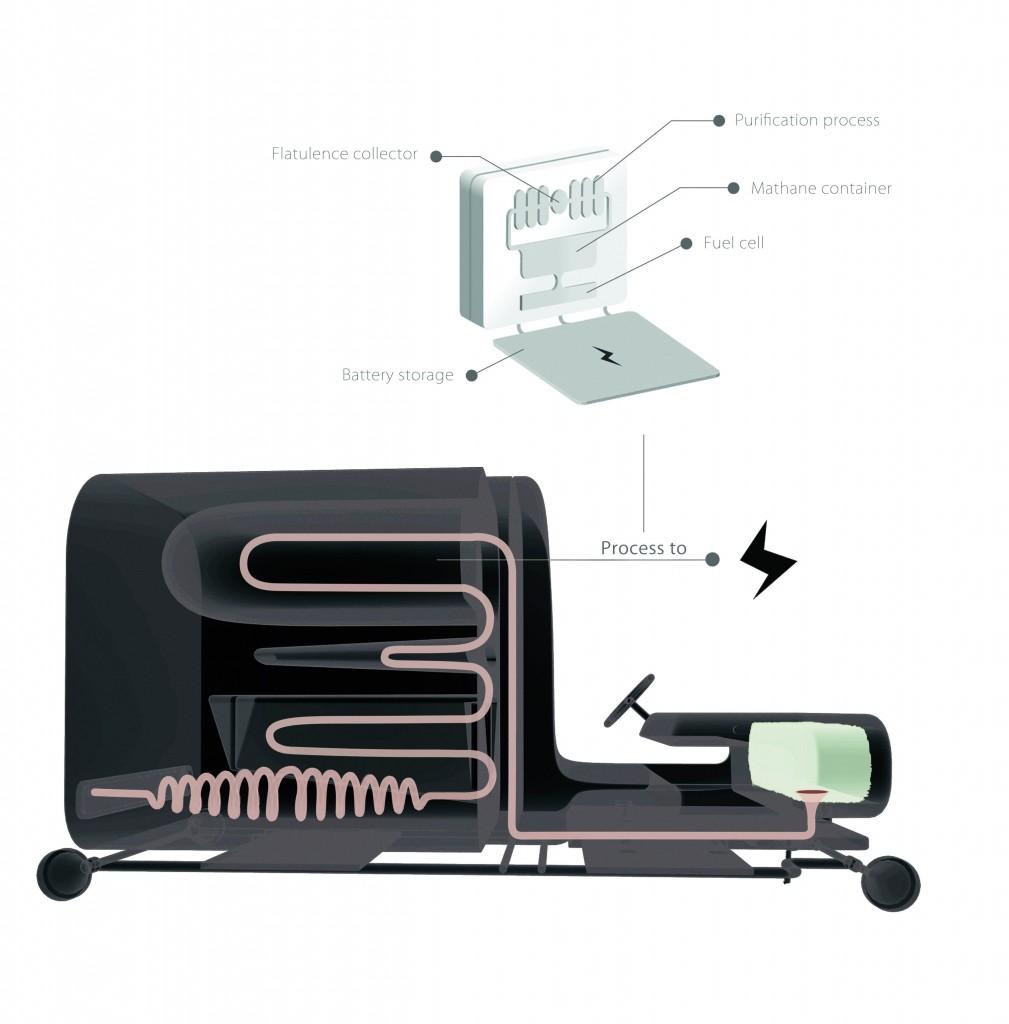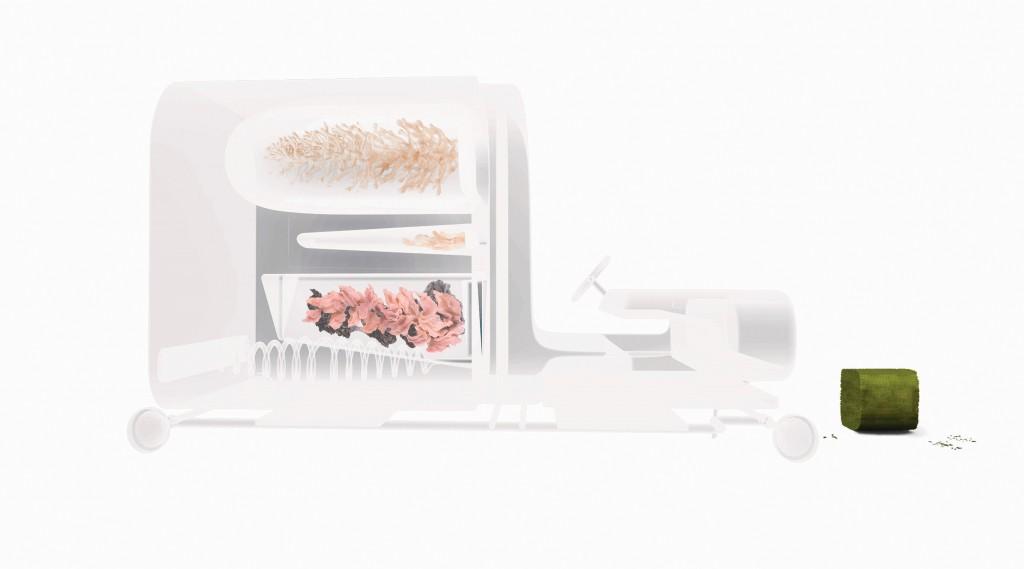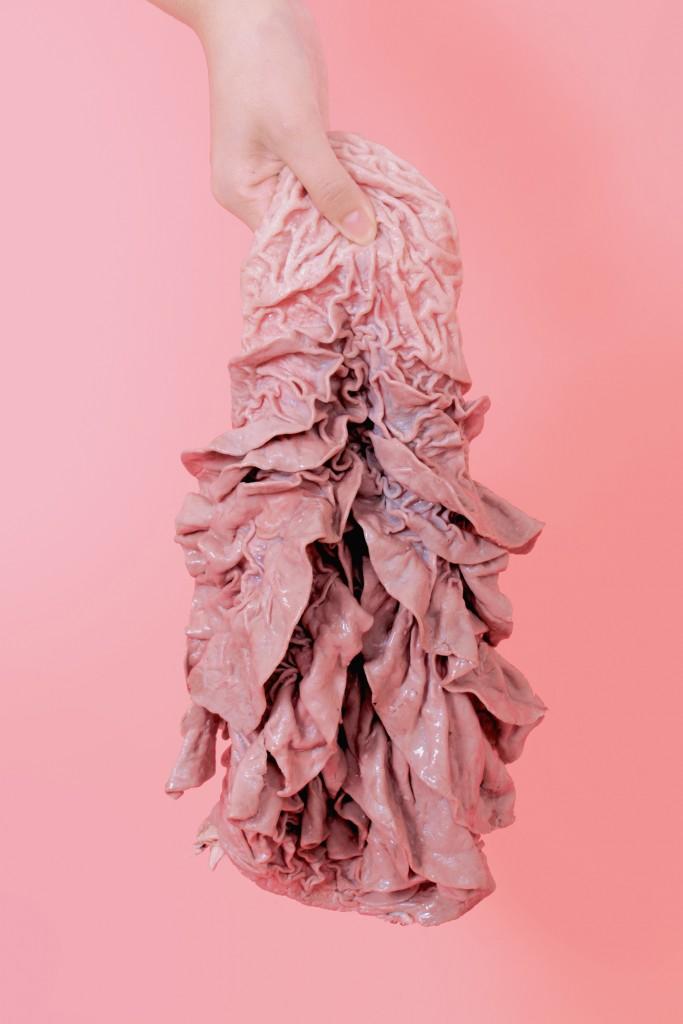
We hear a lot about the dangers of methane–the primary component in natural gas, which is also emitted from our own bodies. It can be unsafe in small spaces. It’s explosive. It’s deadly when mixed with other substances. It’s responsible for global warming by way of multiple avenues, with human activities topping the list.
Scientists and government agencies spend considerable amounts of time and money both measuring and evaluating the levels and effects of methane gas on the planet–as well as its inhabitants.
While it seems impossibly comical to believe that farting cows are causing emissions issues and problems, perhaps turning the problem around and using it for inspiration is more productive. At least that’s what YiWen Tseng thinks. She sees all those livestock emissions as a positive force–and one that could powerfully fuel up the road trips of your future–providing you with the perfect materials for self-sustainability in making fuel.
Not an actual product yet, Tseng’s idea is just bubbling up to the surface now as a new concept, based on nature, and sure to blow the minds of many who like most–and understandably so–find it difficult to look past the gas pump for powering a car. Employing the genius of biotechnology, 3D printing, and automotive engineering, it would be an understatement to say that YiWen Tsing is ‘thinking outside the box.’
Considering the amount of power cow stomachs are exuding in driving methane gas into the environment, Tseng wants you to look toward them as an alternative fuel. If you thought puttering down the street in a eco-friendly vehicle powered by potato chips or watermelon rinds was a far-out idea, then Tseng’s concept is really going to jet you into the next stratosphere, rocketed by way of 3D printed cow bellies.
While it may sound surreal at the moment, Tseng sees a real future for cars engineered by a system engaged by four 3D printed hybrid cow stomachs placed at the rear of each vehicle. Think of them as living, eating stomachs, producing those abovementioned byproducts that fuel your vehicle.
“In a speculative far future world, if biotechnology could spark a new revolution, would a new hybrid industrial product also revolutionize our environment? 3D bioprinting is currently used in organ transplants,” says Tsing. “Through this technique, the cow’s digestive system might be appropriated to become a self-sufficient way to produce alternative fuel and also a key to green this world.”
The biologically inspired ‘living’ fuel design, referred to as the Digestive Car, would be initially powered by feeding the 3D bioprinted stomachs grass, and follows this anatomical model:
- The rumen, with the help of a variety of existent microbes, breaks down and begins digesting food such as grass, while storing methane.

- The reticulum, constructed with a honeycomb-patterned wall, filters ingredients to make sure items in the car area like hardware (such as screws, stones, and nails) do not pass through.
- The omasum is a very, very fine filter allowing more food and fluids to pass through.
- The abomasum, which breaks down the final pieces of food, is responsible for making the ‘stomach juice,’ and can allow for resulting waste to be removed and used as compost.
According to Tseng, this entire process is what will produce the methane in amounts sufficient enough to get your motor running. As filtration and ensuing processes produce the methane, it travels to the front of your car and is then stored in a battery area for producing the resulting and required engine power. While it does travel to a battery storage area, no formal storage tank is needed for the on-demand fuel system concept.
“When the driver uses the stomachs to fuel the vehicle, it returns a bio-waste,” says Tseng. “By collecting the energy from nature it is then contributed back in to the environment. This bio vehicle process itself represents the circulation of ecological systems.”
Even more interesting is that the stomachs will stay in character with mechanics being expected to ‘monitor their health’ and keep the pieces inside out for better examination. While the current idea shows the multi-stomach design fitting to the chassis of any old vehicle, Tseng’s artwork shows a progressive vehicle with a square shape, an enclosed area in the back for the stomachs, and an area in the driver’s compartment that one can see through.

It’s important to note that this project is only rich in concept so far, as while Tseng has developed a plan with potential, she does not have an actual prototype or timeline for producing one. She sees her role as that of a ‘critical designer,’ often revolving around fictional themes that are provocative and cause us to think about not only the present, but the future as well.
While it is currently just in the industrial design stage, we hope to hear of further progress associated with such a provocative idea for fuel, self-sustainability, and promoting a healthier–albeit still bustling–world all around.
Have you considered a design like this before? Do you think 3D bioprinting could actually be a catalyst for producing sustainable fuel sources? Discuss in the 3D Printed Cow Stomachs forum over at 3DPB.com.
Subscribe to Our Email Newsletter
Stay up-to-date on all the latest news from the 3D printing industry and receive information and offers from third party vendors.
You May Also Like
Profiling a Construction 3D Printing Pioneer: US Army Corps of Engineers’ Megan Kreiger
The world of construction 3D printing is still so new that the true experts can probably be counted on two hands. Among them is Megan Kreiger, Portfolio Manager of Additive...
US Army Corps of Engineers Taps Lincoln Electric & Eaton for Largest 3D Printed US Civil Works Part
The Soo Locks sit on the US-Canadian border, enabling maritime travel between Lake Superior and Lake Huron, from which ships can reach the rest of the Great Lakes. Crafts carrying...
Construction 3D Printing CEO Reflects on Being Female in Construction
Natalie Wadley, CEO of ChangeMaker3D, could hear the words of her daughter sitting next to her resounding in her head. “Mum, MUM, you’ve won!” Wadley had just won the prestigious...
1Print to Commercialize 3D Printed Coastal Resilience Solutions
1Print, a company that specializes in deploying additive construction (AC) for infrastructure projects, has entered an agreement with the University of Miami (UM) to accelerate commercialization of the SEAHIVE shoreline...






























